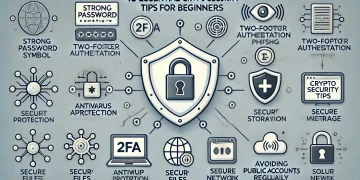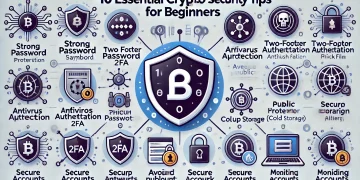The cryptocurrency industry stands at a crucial crossroads regarding its environmental impact, with the stark contrast between Proof of Work (PoW) mining and Proof of Stake (PoS) consensus mechanisms taking center stage in discussions about blockchain sustainability. As environmental concerns become increasingly paramount in the global conversation about technology adoption, understanding the ecological implications of these different consensus mechanisms has never been more critical.
The Environmental Footprint of Cryptocurrency Mining
Energy Consumption in Proof of Work
The traditional Proof of Work mining process, popularized by Bitcoin, has drawn significant attention for its substantial energy consumption. Mining operations worldwide utilize specialized hardware running complex mathematical calculations 24/7 to secure blockchain networks. This process requires massive amounts of computational power, translating into enormous electricity consumption that rivals the energy usage of entire nations.
The scale of mining operations has grown exponentially with the rising value of cryptocurrencies, leading to the establishment of industrial-scale mining facilities. These operations often require sophisticated cooling systems to prevent equipment overheating, further increasing their energy demands. The environmental impact extends beyond mere electricity consumption to include electronic waste generation as mining equipment becomes obsolete and requires replacement.
Carbon Footprint Considerations
The environmental impact of mining varies significantly depending on the source of electricity used to power mining operations. In regions where fossil fuels dominate the energy mix, mining activities contribute substantially to carbon emissions. While some mining operations have made efforts to utilize renewable energy sources, the industry’s overall carbon footprint remains a significant concern for environmentalists and policymakers.
The Emergence of Proof of Stake as a Green Alternative
Understanding Staking’s Energy Efficiency
Proof of Stake represents a paradigm shift in how blockchain networks achieve consensus. Instead of requiring energy-intensive computational work, PoS systems secure networks through economic stake. Validators must lock up (stake) cryptocurrency tokens to participate in block validation, making the process virtually energy-neutral compared to mining.
The fundamental difference in resource requirements between mining and staking creates a dramatic disparity in environmental impact. While a mining operation might consume enough electricity to power thousands of homes, a staking node can operate on the same amount of energy needed to run a regular laptop or desktop computer.
Comparative Analysis: Mining vs. Staking
Energy Consumption Metrics
When comparing the environmental impact of mining and staking, the differences in energy consumption are staggering. Research indicates that PoS networks typically consume less than 1% of the energy required by comparable PoW systems. This dramatic reduction in energy requirements translates directly into a smaller carbon footprint and reduced environmental impact.
Infrastructure Requirements
The infrastructure needed for mining operations involves significant material resources, including specialized ASIC machines, cooling systems, and facility construction. In contrast, staking can be performed on standard computing equipment, requiring minimal additional infrastructure. This difference in hardware requirements has implications not only for energy consumption but also for electronic waste generation.
The Transition to Sustainable Blockchain Technology
Industry Shifts Toward Green Solutions
The cryptocurrency industry has begun recognizing the importance of environmental sustainability, with many new projects choosing PoS over PoW from inception. Even established networks, most notably Ethereum’s transition to PoS, demonstrate the industry’s growing commitment to reducing its environmental impact.
Renewable Energy Integration
While mining operations can potentially utilize renewable energy sources, staking’s inherently lower energy requirements make it easier to achieve true carbon neutrality. The minimal energy needs of staking can be readily met through small-scale renewable energy solutions, making it a more practical choice for environmentally conscious blockchain networks.
Economic and Environmental Trade-offs
Security Considerations
Critics of PoS often point to potential security trade-offs compared to PoW systems. However, research suggests that well-designed PoS networks can achieve comparable security levels while maintaining their environmental advantages. The key lies in proper protocol design and implementation rather than raw computational power.
Accessibility and Decentralization
Staking generally offers lower barriers to entry compared to mining, potentially leading to greater network decentralization. This accessibility factor, combined with the environmental benefits, makes staking an attractive option for both network participants and environmentally conscious investors.
Future Implications and Industry Trends
Regulatory Considerations
As governments worldwide implement stricter environmental regulations, the pressure on cryptocurrency projects to adopt more sustainable consensus mechanisms increases. This regulatory environment may accelerate the industry’s shift toward staking and other energy-efficient alternatives to traditional mining.
Technological Innovation
Ongoing research and development in blockchain technology continue to produce innovations that could further reduce the environmental impact of network consensus mechanisms. These advances may eventually lead to even more efficient alternatives to both mining and current staking implementations.
Frequently Asked Questions
How much more energy-efficient is staking compared to mining?
Staking typically consumes 99% less energy than proof of work mining, with some estimates suggesting even greater efficiency gains depending on the specific implementation and network size.
Can mining ever become environmentally sustainable?
While mining operations can adopt renewable energy sources, the fundamental energy requirements of PoW make it challenging to achieve true sustainability compared to PoS alternatives.
Does the switch to staking affect network security?
When properly implemented, PoS networks can achieve security levels comparable to PoW systems while maintaining their environmental advantages. The security model differs but isn’t necessarily weaker.
What are the hardware requirements for staking versus mining?
Staking can be performed on standard computing equipment, while mining requires specialized hardware that becomes obsolete relatively quickly, contributing to electronic waste.
How does the environmental impact affect cryptocurrency adoption?
Environmental concerns have become a significant factor in cryptocurrency adoption, with many investors and institutions favoring more sustainable blockchain networks.
As the blockchain industry continues to evolve, the environmental impact of different consensus mechanisms remains a crucial consideration for developers, investors, and users alike. The stark contrast between mining and staking’s environmental footprints has helped drive innovation toward more sustainable solutions. Understanding these differences is essential for making informed decisions about blockchain technology adoption and development in an increasingly environmentally conscious world.






























